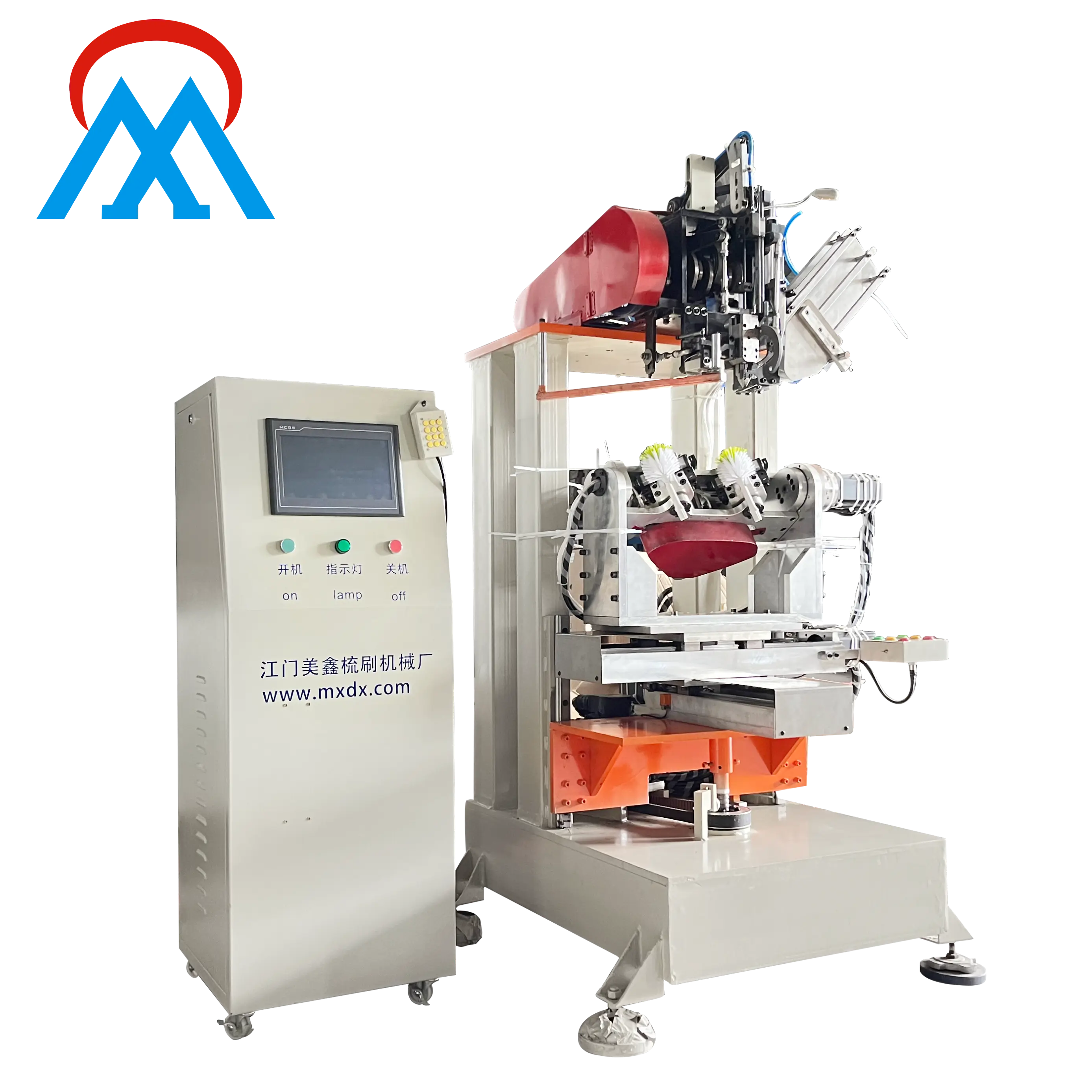Understanding Brush Tufting Machine Working Principle for Better Tufting Results
Brush tufting machines are essential for producing high-quality, precision-engineered brushes. These machines streamline production processes, reducing manual labor and enhancing product quality. They are particularly important in meeting the growing demand for customization and precision in various industries.
What Is a Brush Tufting Machine?
A brush tufting machine is a sophisticated piece of equipment designed to insert bristles into brush bases. The key components include the drilling unit, tufting head, trimming system, and flagging mechanism. Each of these parts plays a crucial role in creating brushes with consistent bristle density and alignment.

The Drilling Unit
The drilling unit creates holes in the brush base. This step is critical for ensuring uniform holes that allow for precise bristle placement.
The Tufting Head
The tufting head inserts bristles into the pre-drilled holes. It ensures that each bristle is securely placed, contributing to the overall consistency and quality of the brush.
The Trimming System
The trimming system cuts excess bristles, ensuring a uniform and attractive finish. This step is essential for a professional appearance and functionality.
The Flagging Mechanism
The flagging mechanism further refines the bristles, giving them a neat and professional look. It plays a vital role in enhancing the brush's longevity and performance.
The Working Principle of Brush Tufting Machines
The operational mechanism of brush tufting machines is a testament to engineering excellence. The process begins with the drilling unit creating holes in the brush base. Following this, the tufting head inserts bristles into these holes, securing them firmly. This step-by-step procedure guarantees uniformity in bristle placement, which is crucial for the brushs performance.
Key Factors Influencing Tufting Quality
Achieving high-quality tufting results depends on several factors, including the choice of materials, precise machine settings, and environmental conditions.
Materials
Choosing the right bristle material is essential. For example, nylon is ideal for cleaning brushes, while tufted bristles are better suited for synthetic use. The material must be compatible with the intended application.
Machine Settings
Proper machine settings are crucial for ensuring the bristles are inserted correctly. Parameters such as feed rate, pressure, and speed need to be adjusted for optimal performance.
Environmental Conditions
Controlling the environment is vital. Factors like temperature, humidity, and cleanliness of the workspace can impact the tufting process and final brush quality. Maintaining a controlled environment ensures consistent and high-quality results.
Innovative Uses and Applications of Brush Tufting Machines
Brush tufting machines find applications in a diverse array of industries. Lets explore some innovative uses:
Automotive Industry
Automotive manufacturers use brush tufting machines to produce cleaning brushes for intricate parts, such as engines and interiors. These brushes ensure thorough cleaning without damaging sensitive components.
Healthcare Industry
Healthcare facilities employ specialized brushes tufted by these machines for hygiene purposes. For example, oral hygiene brushes are manufactured using advanced tufting techniques to ensure stringent hygiene standards.
Customization and Innovation
Innovative uses of brush tufting machines have led to the development of specialized brushes for various applications. These innovations have transformed the manufacturing landscape, offering customized solutions that meet specific industry needs.
Troubleshooting Common Issues in Brush Tufting Machines
Despite their advanced technology, brush tufting machines can encounter issues such as misalignment, inconsistent bristle density, or mechanical malfunctions. Identifying these problems early and applying effective solutions can prevent production delays and ensure continuous high-quality output.
Misalignment
Misalignment can occur due to improper calibration or wear and tear. Regular maintenance checks and realignment can prevent this issue.
Inconsistent Bristle Density
Mechanical Malfunctions
Mechanical malfunctions can arise from wear and tear or improper operation. Regular machine maintenance and a thorough understanding of proper operation can prevent these issues.
Enhancing Efficiency: Latest Technological Advancements in Brush Tufting
The brush tufting industry is witnessing a wave of technological advancements. From intelligent control systems to energy-efficient designs and environmentally friendly materials, these innovations are transforming manufacturing processes. Lets explore these advancements:
Intelligent Control Systems
Intelligent control systems monitor and adjust machine settings in real-time, ensuring optimal performance and minimizing errors. These systems can diagnose faults and alert operators before issues become critical.
Energy-Efficient Designs
Energy-efficient designs reduce energy consumption, lowering operational costs. These designs also contribute to sustainable manufacturing practices, making the process more environmentally friendly.
Environmentally Friendly Materials
Using environmentally friendly materials reduces waste and minimizes the machines ecological footprint. Sustainable materials can also produce brushes with better performance and longevity.
The Pivotal Role of Brush Tufting Machines
In conclusion, understanding the working principles of brush tufting machines is crucial for achieving superior tufting outcomes. By optimizing materials, settings, and maintenance practices, manufacturers can harness the full potential of these machines. As technology continues to advance, the future of brush tufting looks promising, paving the way for even greater innovations and applications in the industry.
-
-
-
3.1Materials
-
-
-
-
5.1Misalignment
-
-
QUICK LINKS
PRODUCTS
CONTACT US
Contact Person: Leo
Email: Mxdx@Mxbrushmachinery.Com
Tel: +86 13232438671
Skype/Facebook: +86 13232438671
Fax: 0750-6575221
Address: Heqiaolingwu Road, Sanyi Industrial Estate, Siqian Town, Xinhui District, Jiangmen City, Guangdong Province, China (Pc:529159)Pe 2019
